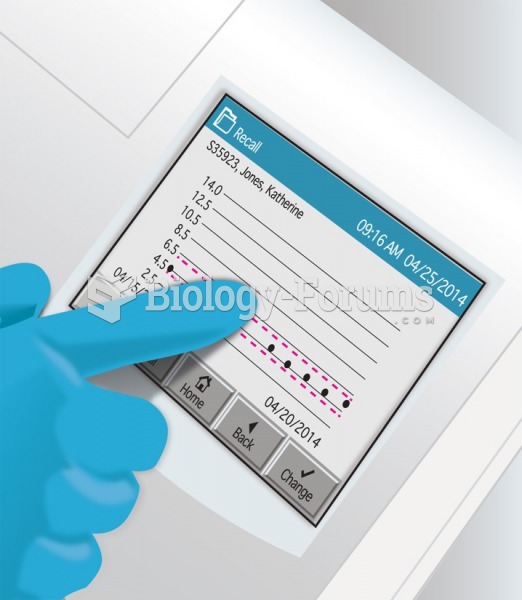|
|
|
The familiar sounds of your heart are made by the heart's valves as they open and close.
After a vasectomy, it takes about 12 ejaculations to clear out sperm that were already beyond the blocked area.
Human stomach acid is strong enough to dissolve small pieces of metal such as razor blades or staples.
Certain chemicals, after ingestion, can be converted by the body into cyanide. Most of these chemicals have been removed from the market, but some old nail polish remover, solvents, and plastics manufacturing solutions can contain these substances.
Interferon was scarce and expensive until 1980, when the interferon gene was inserted into bacteria using recombinant DNA technology, allowing for mass cultivation and purification from bacterial cultures.







